You are likely reading this blog using a Flat Panel Display (FPD), because they are so ubiquitous in our desktop, tablet and smart phone devices. Today I’m following up from a previous article. A quick recap of the unique design flow for FPD is shown below:
What follows is the second part of a Q&A discussion with Chen Zhao from Empyrean about the challenges of automating the design of FPD.
Q: IC designs have schematic and layout abstractions, how about for FPD?
Circuit schematic design and layout design are two important steps for FPD designs. Schematic design is mainly used for the pixel unit, gate on array (GOA) control unit and the overall circuit design of FPD. On the one hand, schematic design provides the circuit input stimulus required for circuit simulation of the design, and on the other hand, it is also provided as circuit data to the subsequent layout vs. schematic (LVS) verification tools to verify the consistency of the two.
Q: How are the arrays for an FPD designed?
The circuit of the traditional rectangular FPD design is relatively simple, the array design is very regular, but the repetition scale is large. For example, a 4K FPD needs to support a circuit scale of about 8 million pixels of 4096×2160. In order to facilitate the circuit description, the schematic design tool provides a Cascade mode specifically for describing the array circuit, which greatly facilitates the simulation and LVS verification by the designer. The following is a Cascade description form of a 4K rectangular array circuit:
X0 data_i data_o gate_i gate_o pixel1
+ __HES__cascade=str(“4096×2160”)
+ __HES__simtype=str(“fast”)
+ __HES__connections.1=str(“gate_i:H:gate_o”)
+ __HES__connections.2=str(“data_i:V:data_o”)
Q: How do you handle the design of an FPD with curvilinear shapes?
FPD has long been rectangular. The so-called curvilinear-shaped FPD refers to a curved FPD that is different from a rectangle. In recent years, there have been endless emergence of curvilinear-shaped mobile phone FPDs, such as notch screen, water drop screen, four-sided curved screen, under-screen camera, etc., proclaiming that mainstream mobile phone screens have entered the curvilinear-shaped era. Other curvilinear-shaped FPD applications include round watches and automobile dials of various shapes.
Q: Do EDA tools handle curvilinear shapes?
The FPD EDA tool is basically inherited from the integrated circuit EDA tool. Since the design method of integrated circuits is based on the rectangular design of the circuit, the emergence of the demand for curvilinear-shaped FPDs makes the early FPD EDA tools unable to cope with it. The curvilinear-shaped design has to be done manually, which is time-consuming and laborious, seriously affecting efficiency, easy to make mistakes, and the quality is not easy to guarantee.
Therefore, the schematic design tool needs to provide new technologies and solutions to support the circuit of the curvilinear-shaped FPD. The circuit schematic design tool EsimFPD SE developed by Empyrean automatically generates curvilinear-shaped FPD circuits from the definition of curvilinear shapes, and simultaneously applies them to circuit simulation and LVS verification, which greatly improves the extremely low work efficiency of designers who originally design curvilinear-shaped circuits by hand. For example, this shows the definition of a curvilinear FPD shape:
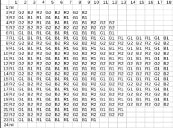
Based on this definition, the schematic design tool directly generates cascade type hierarchical circuit. It can automatically generate the interconnection and definition of circuit symbols, and support RGB, RGBW, RGBY and other pixel structures. FPD designers can use this technology to easily complete curvilinear-shaped circuit diagram design.
At the same time, Empyrean’s EDA platform provides a complete and efficient interactive design flow for FPD circuit design through the seamless integration of circuit schematic design, circuit simulation, and waveform viewing technologies.
Q: How do you handle the layout of curvilinear FPD designs?
In the era of curvilinear-shaped FPDs, the non-traditional rectangular FPD light-emitting area and extremely narrow frame pose extremely challenges to FPD layout design. The development of special design tools for curvilinear-shaped FPDs has become an urgent need in the contemporary FPD field.
In the design of curvilinear-shaped FPDs, the first thing to do is to break the limitations of traditional EDA tools, fill the pixel array unit in the curvilinear-shaped contour graphics automatically and accurately, and automatically extract the circuit simulation netlist of the curvilinear-shaped FPD.
In the field of fanout routing, the concept of routing has undergone tremendous changes. The traditional rectangular FPD is a three-section path routing, but the curvilinear-shaped FPD requires routing along the arc contour outside the switch port of the light-emitting (AA) area. This requires the routing engine to ensure that the design rule check (DRC) is met and no space is wasted during arc contour routing.
At the same time, the design of the curvilinear-shaped FPD frame requires that the layout database can support units that can rotate at any angle, and the GOA unit can be rotated at the rounded corners of the screen to avoid space waste and achieve a narrower frame.
In areas where pixels are missing caused by cameras such as notch screens and water drop screens, it is necessary to reconnect the ports that separate the switch line and network caused by the missing pixels. At the same time, the pixel loss caused the abnormal load of the pixel row, which needs to be compensated.
Faced with the above-mentioned challenges of curvilinear-shaped FPD design, Empyrean AetherFPD LEXP came into being. This tool provides layout design suitable for curvilinear-shaped FPDs to meet the requirements for FPDs in consumer electronics fields such as mobile phones, watches, and automobile dials.
AetherFPD LEXP can generate pixel arrays according to contours of curvilinear shapes, and place peripheral units in batches of orthogonal or rotation according to the environment. Based on traditional routing algorithms [11], while avoiding obstacles automatically, it can perform batch mode intelligent routing and close to contours to achieve fanout routing. These advanced technologies not only greatly improve design efficiency, but also meet the requirements of narrow frame while ensuring correctness.
Q: Can you show me an example curvilinear FPD layout?
The AetherFPD LEXP ladder solution can achieve 1.1mm frame curvilinear-shaped layout design requirements of the A-Si/IGZO process, tight placement and regular routing to ensure product stability. Figure 6 shows the effect diagram of the curvilinear-shaped layout ladder design. To cope with the contours of the curvilinear-shape, AetherFPD LEXP provides an extremely compact form of wire binding that can fit closely to the arc:
Q: So your FPD layout tools handle all angle designs?
AetherFPD LEXP rotation solution can realize the uniform layout of the LTPS process GOA unit at any angle. The routing is smooth, beautiful and compact, and the product yield is improved. The design effect diagram of the curvilinear-shaped layout rotation is shown in the next figure. AetherFPD LEXP has made precise improvements to the traditional EDA database, and perfectly supports the rotating GOA unit placed at any angle at the rounded corners. This is an extremely important key technological breakthrough for curvilinear-shaped layout design tools.
Summary
IC designers will quickly see the similarities and differences with FPD schematic and layout designs, so it’s a relief to know that using specialized schematic and layout tools intended for FPD that support curvilinear layout that automate the design task for your engineering team. In the next part of this blog series we find out more about:
- DRC/LVS for curvilinear layout
- Circuit simulation
- RC extraction
- Thermoelectric analysis
- Mask analysis
Related Blogs
Automating the Design of Flat Panel Displays
Xilinx Moves from Internal Flow to Commercial Flow for IP Integration
Automating the Analysis of Power MOSFET Designs
Share this post via:
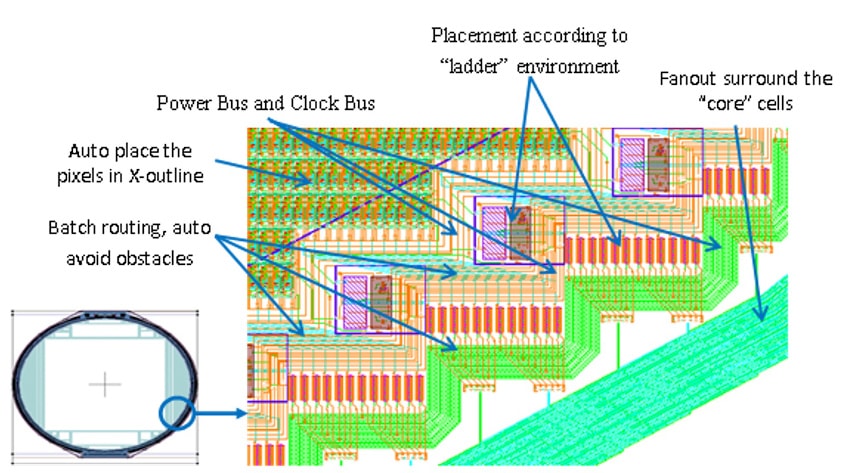

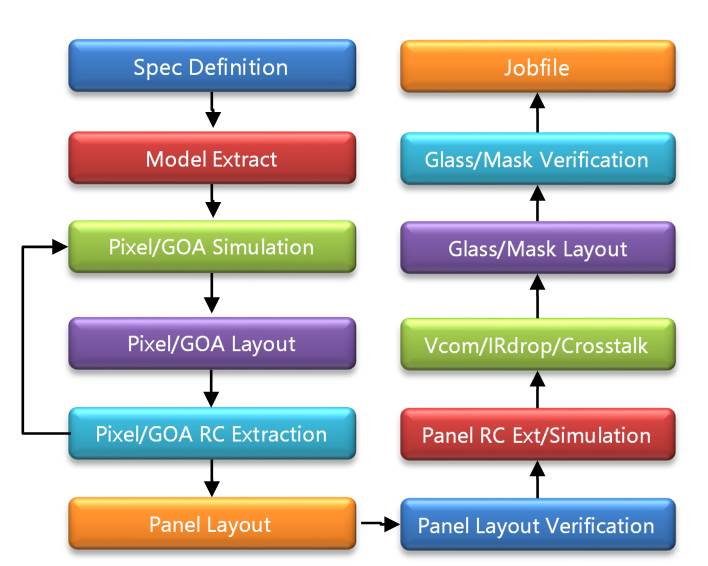
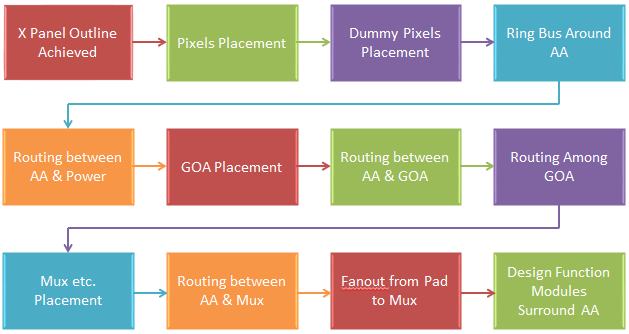
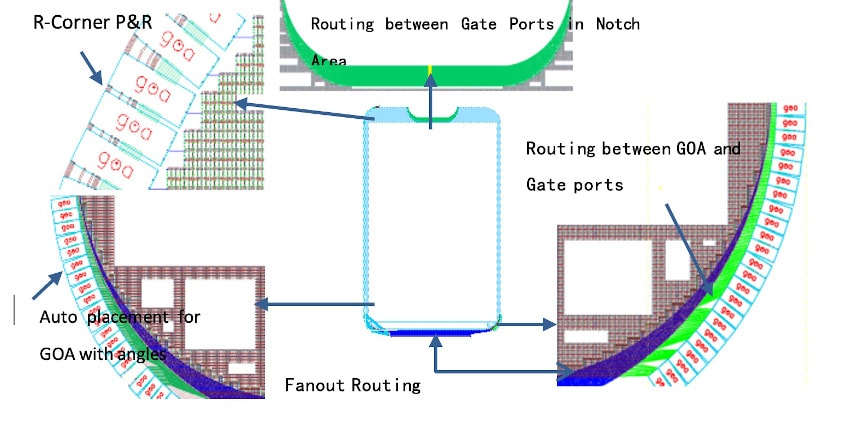




Comments
There are no comments yet.
You must register or log in to view/post comments.